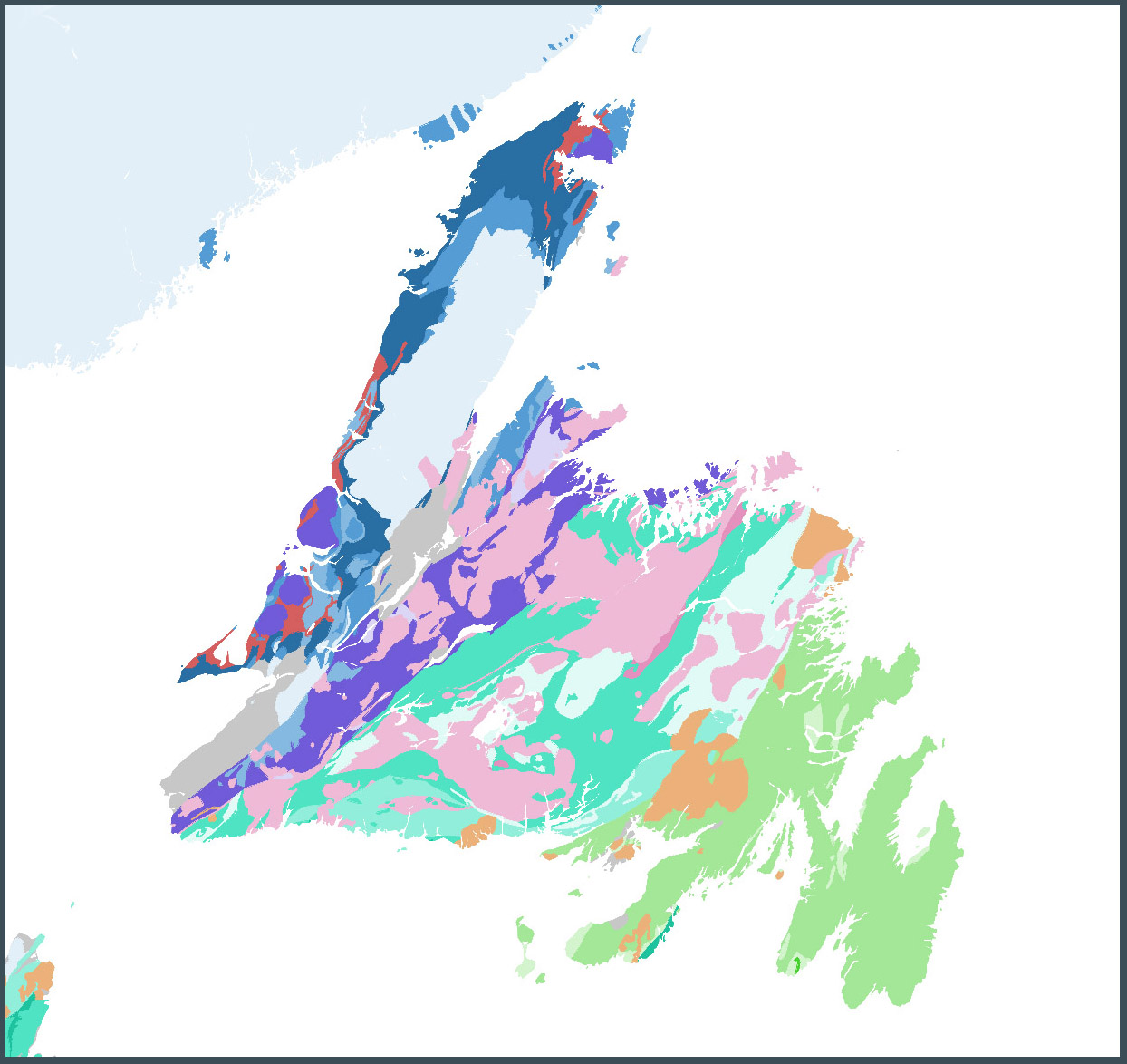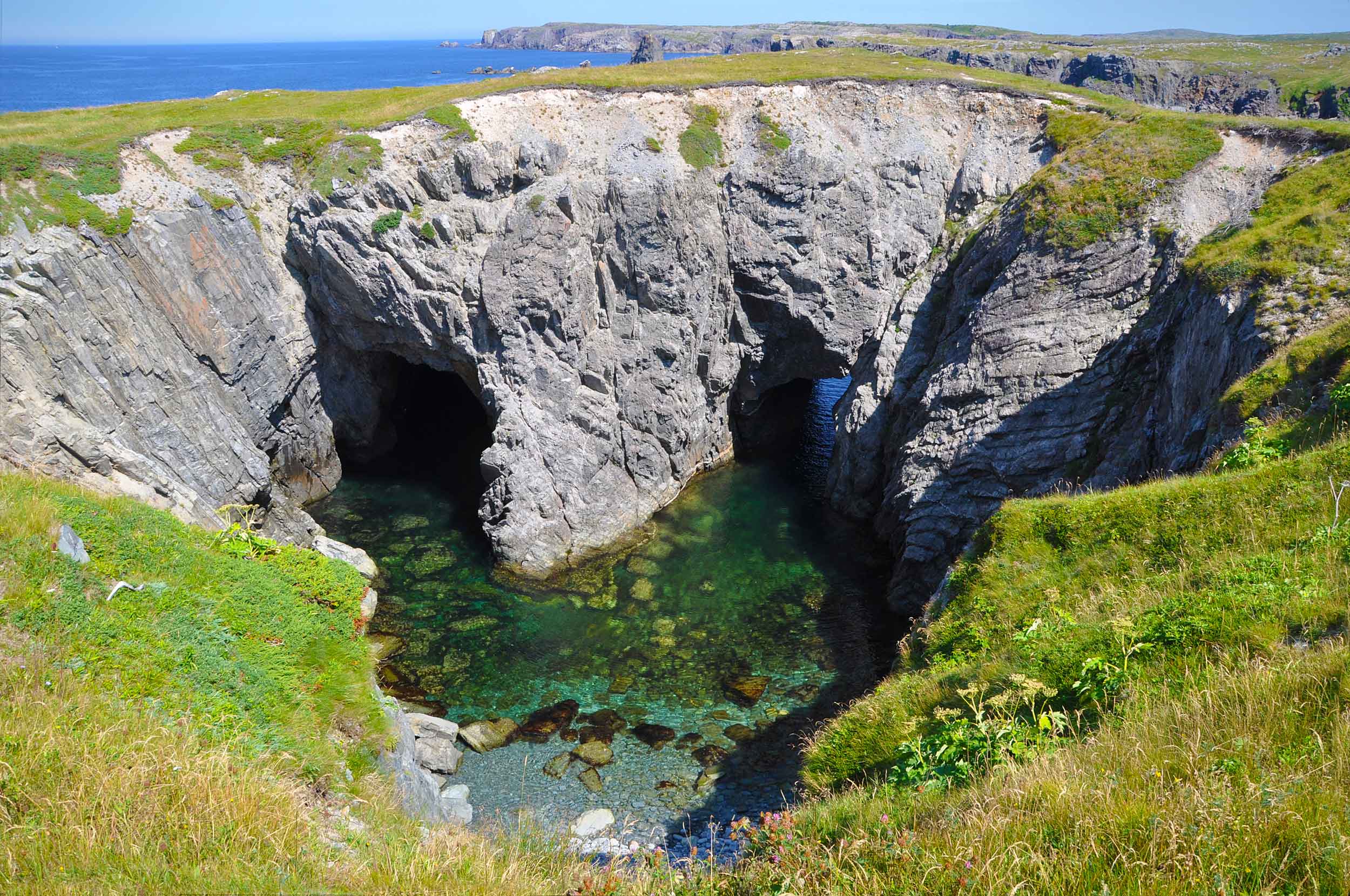Newfoundland’s geological history is as rich and diverse as its landscapes, spanning billions of years of geological processes. From ancient continental collisions to the carving force of glaciers during the Ice Age, the island’s geological story is a testament to the dynamic forces that have shaped the Earth’s surface.
Geology - Newfoundland

Newfoundland Geology GIS
Newfoundland’s geological journey begins over 3.5 billion years ago, with the formation of some of the oldest rocks found on Earth. The Acasta Gneiss Complex, located in the Northwest Territories, contains rocks dating back to approximately 4 billion years, offering insights into the early stages of our planet’s formation. While these specific rocks aren’t found in Newfoundland, they provide context for understanding the ancient nature of Earth’s crust.
In Newfoundland itself, the oldest rocks are around 1.2 billion years old and belong to the Grenville Province, a vast region of ancient continental crust that stretches from Newfoundland to the Canadian Shield. These rocks, primarily granites and gneisses, formed during a period of intense tectonic activity known as the Grenville Orogeny. The collision of continents during this time resulted in the formation of mountain ranges and the metamorphism of existing rocks, giving rise to the distinct geological characteristics seen in Newfoundland today.
Newfoundland’s geological history is marked by several significant tectonic events, including the assembly and breakup of supercontinents. During the Proterozoic Eon, approximately 1.2 billion years ago, multiple landmasses collided to form the supercontinent Rodinia. Newfoundland was situated near the center of this supercontinent, experiencing mountain-building processes and the formation of igneous intrusions.
As Rodinia began to break apart during the Neoproterozoic and Paleozoic Eras, Newfoundland played a crucial role in the opening of the Iapetus Ocean. This ancient ocean basin separated the ancestral North American and European continents and was eventually closed during the collision that formed the Appalachian Mountains. Newfoundland’s position along the leading edge of the North American plate meant that it experienced intense tectonic activity, including subduction, volcanic eruptions, and the deposition of sedimentary rocks.
The final stages of Newfoundland’s tectonic history occurred during the Mesozoic and Cenozoic Eras, with the opening of the Atlantic Ocean and the separation of North America from Eurasia. This rifting process created the unique geological features seen along Newfoundland’s coastlines, including dramatic fjords, towering cliffs, and exposed geological formations.
Newfoundland is renowned for its diverse and picturesque landscapes, shaped by geological processes over millions of years. Along the island’s western coast, the Long Range Mountains rise abruptly from the sea, showcasing rugged peaks and deep fjords carved by glaciers during the last Ice Age. These mountains are primarily composed of ancient Precambrian rocks, including gneisses, granites, and sedimentary formations.
In contrast, the eastern coast of Newfoundland features a more subdued topography, with rolling hills and coastal plains formed by sedimentary deposits. The Avalon Peninsula, in particular, is characterized by its complex geology, including volcanic rocks, limestone formations, and evidence of ancient tectonic activity.
One of the most iconic geological features in Newfoundland is Gros Morne National Park, a UNESCO World Heritage Site renowned for its stunning landscapes and geological significance. The park showcases a diverse range of geological formations, including exposed mantle rocks, fjords, and glacial valleys, providing visitors with a glimpse into the island’s tumultuous geological past.
Gros Morne National Park also includes Green Point, which serves as the Global Stratotype Section and Point (GSSP) for the base of the Ordovician Period, providing vital markers for understanding early marine life diversification around 485 million years ago. The only other GSSP in Canada is located at Fortune Head on Newfoundland’s Burin Peninsula, marking the base of the Cambrian Period, which offers crucial insights into the emergence of complex multicellular life forms over 540 million years ago. These two stratigraphic landmarks play a pivotal role in unraveling the Earth’s ancient past and continue to be invaluable resources for geologists and paleontologists worldwide.
In conclusion, Newfoundland’s geology is a testament to the dynamic forces that have shaped the Earth’s surface over billions of years. From ancient continental collisions to the carving force of glaciers, the island’s geological history is written in its rocks and landscapes, offering a fascinating glimpse into the evolution of our planet.
[Source: ChatGPT]






